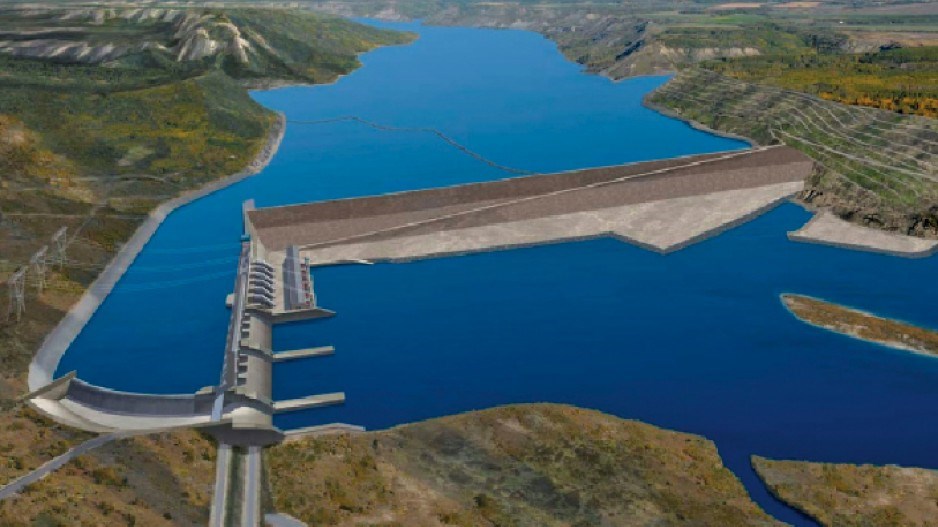BC has an electricity surplus equivalent to the Site C dam, which means the $7.9 billion mega-project could be deferred, says NDP energy and mines critic John Horgan.
Nor will B.C. need any more independent power projects, like wind and run-of-river, any time soon. That’s not good news for independent power producers in B.C., but it’s music to the ears of David Craig, executive director for the Commercial Energy Consumers Association of BC, who said BC Hydro has been forced by Liberal government policies into paying too much for private power it doesn’t need.
“All of the previous activity around independent power producers got their industry into a position where they advocated for themselves doing too much, and now they’ve got a 20-year window in the penalty box,” Craig said.
According to numbers culled from BC Hydro’s 2012 annual report and environmental impact statement for the $7.9 billion Site C dam, the NDP calculates B.C. now has a 10-year surplus of 5,200 gigawatt hours.
That’s roughly the output of the Site C dam, which would produce enough electricity to power between 450,000 and 470,000 average homes. Worse, the surplus comes at a premium because BC Hydro is paying an average of $94 per megawatt hour (MWh) for clean power – primarily wind and run-of-river – whereas the spot price for power is $37 per MWh.??
According to the NDP, BC Hydro will lose $1 billion over four years on the discounting. The NDP’s analysis confirms the findings of a September 12-20, 2011, Business in Vancouver Full Disclosure series, which concluded Site C would be unnecessary, were it not for the Clean Energy Act, which requires energy self sufficiency and limit’s B.C. ability to buy power from other jurisdictions at lower prices. (Also see “B.C. in need of Plan B for Site C” – Timothy Renshaw’s Public Offerings column – BIV issue 1135; July 26-August 1, 2011.) However, some industry insiders say a prolonged drought, rapid economic growth or a policy change requiring the nascent liquefied natural gas (LNG) industry to use hydro power, instead of burning natural gas to generate power, could blow BC Hydro’s surplus overnight.
LNG is a wild card in B.C.’s future power needs. BC Hydro’s load forecasts do not include the power demands of chilling natural gas into a liquid – a hugely energy intensive process. Craig said a single major LNG plant could consume the equivalent of Site C dam and six have been proposed. But industry and the B.C. Liberal government have both indicated that it will be at least partly self-sufficient – burning natural gas to produce the power the LNG process needs. But as Craig also points out, the front end of LNG – gathering, processing and pipelines – would also require a signficant portion of Site C’s capacity; however, he believes those needs can be met largely through demand-side management.
Although an NDP government would see the Site C environmental review completed, Horgan said the project should be deferred until an LNG industry has been built, as the two mega-projects occurring simultaneously could exacerbate the province’s skilled labour crisis. “The value of mega projects is timing them so that you maximize the economic benefits for the region that they’re taking place in,” Horgan said, “and right now is not the time to build Site C in the Peace.”
Superfluous to requirements?
Power is a unique commodity. It takes years, even decades, to plan and build power plants, but once they are generating, the power can’t be banked on a large scale.
So unless demand and production are perfectly matched and timed, there will often be a surplus when new turbines start turning.
In his book As Long as the Rivers Run: Hydroelectric Development and Native Communities, James Waldram points out similar criticisms of costly power surpluses were levelled at the Social Credit government in the 1980s over the Revelstoke Dam.
“Completed in 1985 at a cost of $2 billion, the Revelstoke Dam’s power was totally superfluous to domestic consumption requirements.”
Clean power producers brace for end of good times
An era of prosperity for clean power producers in B.C. could come to an abrupt end under an NDP government.
A number of run-of-river, wind and bioenergy projects are being built throughout B.C. – many of them involving First Nations – thanks to purchase agreements BC Hydro was obliged to strike with independent power producers (IPPs).
With B.C.’s 10-year power surplus, Horgan sees no need for any more independent power projects for some time.
“It doesn’t mean we will not see further development of private power in areas of B.C. where it’s advantageous to do so,” Horgan told Business in Vancouver. “What the surplus demonstrates is that we have more power now than we need for the foreseeable future – 10 years of surpluses.
“I don’t see another clean call, when we have this much energy available to us, in the short term. It’s not an ideological question, it’s a market question. Would you buy $125 a megawatt power when you can buy it for $30?”
“It is worrisome, and I think it’s very short-sighted,” Donald McInnes, vice-chairman of both Alterra Power Corp. and the Clean Energy Association of BC, said of Horgan’s stance.
“The private sector has done a fantastic job of taking risk out of BC Hydro, doing things for a fixed price and guaranteeing the delivery of this power.”
Were B.C. to start relying on buying power from Washington state and Alberta, McInnes said it would require upgrading transmission lines,. It would also mean that B.C. would have to pay rates that could fluctuate wildly with gas and coal prices, whereas the prices from private power and hydro electric dams are locked in for decades.




